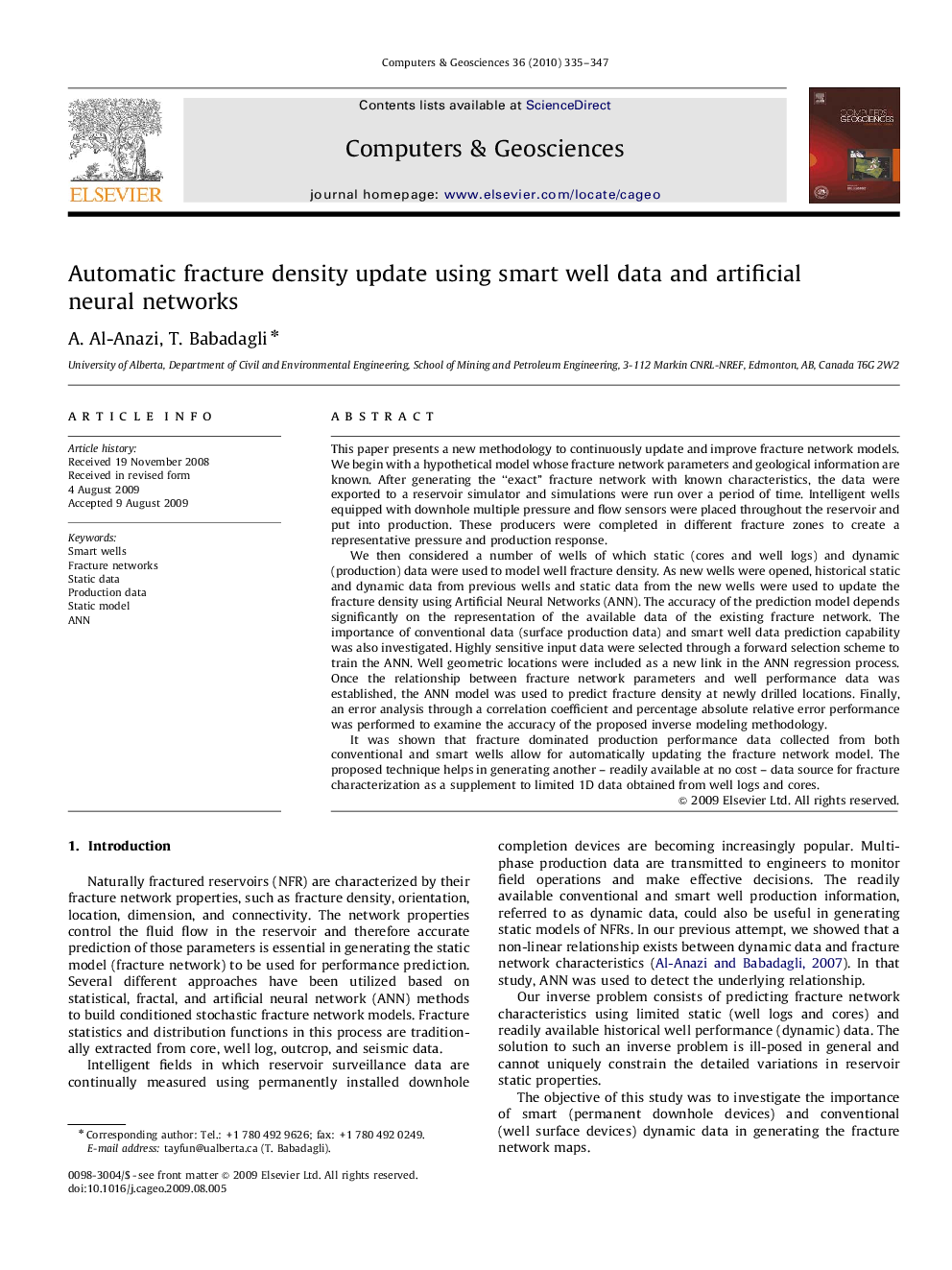| Article ID | Journal | Published Year | Pages | File Type |
|---|---|---|---|---|
| 508175 | Computers & Geosciences | 2010 | 13 Pages |
This paper presents a new methodology to continuously update and improve fracture network models. We begin with a hypothetical model whose fracture network parameters and geological information are known. After generating the “exact” fracture network with known characteristics, the data were exported to a reservoir simulator and simulations were run over a period of time. Intelligent wells equipped with downhole multiple pressure and flow sensors were placed throughout the reservoir and put into production. These producers were completed in different fracture zones to create a representative pressure and production response.We then considered a number of wells of which static (cores and well logs) and dynamic (production) data were used to model well fracture density. As new wells were opened, historical static and dynamic data from previous wells and static data from the new wells were used to update the fracture density using Artificial Neural Networks (ANN). The accuracy of the prediction model depends significantly on the representation of the available data of the existing fracture network. The importance of conventional data (surface production data) and smart well data prediction capability was also investigated. Highly sensitive input data were selected through a forward selection scheme to train the ANN. Well geometric locations were included as a new link in the ANN regression process. Once the relationship between fracture network parameters and well performance data was established, the ANN model was used to predict fracture density at newly drilled locations. Finally, an error analysis through a correlation coefficient and percentage absolute relative error performance was performed to examine the accuracy of the proposed inverse modeling methodology.It was shown that fracture dominated production performance data collected from both conventional and smart wells allow for automatically updating the fracture network model. The proposed technique helps in generating another – readily available at no cost – data source for fracture characterization as a supplement to limited 1D data obtained from well logs and cores.
